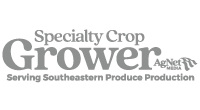By Lukasz L. Stelinski, Lauren Diepenbrock and Larry Duncan Given the focus on HLB in citrus management for more than a decade, important additional pests of citrus have sometimes not received the attention they may deserve. Trees with HLB are weakened and prone to succumb to the effects of the disease when challenged by secondary affliction(s), including infestation by diaprepes …
Oak Mulch Can Improve Florida Flatwoods Soil
By Lorenzo Rossi With no cure for HLB available, searching for alternative mitigation strategies is an urgent priority for a sustainable citrus industry. Interest has grown regarding the use of organic amendments to improve the fertility of Florida native soils. Although hardwood mulch applications have been demonstrated to improve both tree health and soil fertility in other fruit industries, little …
Pest Management Workshop for Florida
The University of Florida Institute of Food and Agricultural Sciences (UF/IFAS) will hold a workshop on citrus insect, mite and nematode management Jan. 19 at the Citrus Research and Education Center in Lake Alfred. The workshop will run from 9 a.m. to 3 p.m. Presentations will be made by UF/IFAS faculty members. UF/IFAS pointed out that pest management in citrus …
Ever-Changing MRLs for Fresh Citrus Exports
By Mark A. Ritenour Modern production practices for fresh fruits and vegetables usually include the use of various preharvest and postharvest chemicals, some of which are pesticides. Legally, these materials must be labeled for use on specific crops and may only be used according to label instructions. Chemical residues on fruits and vegetables are monitored by industry and regulators to …
Techniques Tested on Mandarins in CUPS
By Rhuanito S. Ferrarezi and Mark A. Ritenour Two independent trials were conducted under a commercial citrus under protective screen (CUPS) system. The first trial was to investigate canopy management strategies to improve fruit yield and quality of mandarins. Canopy management is essential for CUPS since the environment stimulates vigorous vegetative growth, posing operational challenges to mechanization that can be …
Preparing for Implementation of Agricultural Water Requirements
By Taylor O’Bannon, Matt Krug and Michelle Danyluk In December 2021, the Food and Drug Administration (FDA) released its proposed changes to the Food Safety Modernization Act (FSMA) Produce Safety Rule (PSR) Subpart E, which covers agricultural water. The proposed changes focus solely on preharvest agricultural water and make no changes to the requirement of water used for harvest and …
Preparing for Freezing Temperatures
With temperatures plummeting over Christmas weekend, the latest episode of the All In For Citrus podcast is well timed. Chris Oswalt, a University of Florida Institute of Food and Agricultural Sciences (UF/IFAS) citrus Extension agent covering Polk and Hillsborough counties, joined the podcast to discuss tips on preparing for freeze events. Oswalt encouraged growers to find a reliable source of …
Sneak Peek: January 2023 Citrus Industry
Past management, a perennial problem for citrus growers, is the primary focus of the January issue of Citrus Industry magazine. An old pest is posing new concerns for Florida growers. The recent resurgence of diaprepes root weevil is the subject of the cover story by University of Florida Institute of Food and Agricultural Sciences (UF/IFAS) researchers Lukasz Stelinski, Lauren Diepenbrock …
Bugs Under the Covers
Individual protective covers (IPCs) do an excellent job keeping HLB-spreading Asian citrus psyllids (ACP) out of young citrus trees, showing a 99.6% reduction in ACP compared to control trees. But they don’t provide “one and done” pest control, according to University of Florida Institute of Food and Agricultural Sciences (UF/IFAS) entomologist Lauren Diepenbrock. In fact, IPCs “create a perfect environment …
Research Center Gets Largest Gift From Grower
The late citrus grower John T. Moose left the largest individual gift ever to the University of Florida Institute of Food and Agricultural Sciences Indian River Research and Education Center (UF/IFAS IRREC) in Fort Pierce. The $260,000 contribution came in 2022, the same year as the center’s 75th anniversary. The gift will help serve local agriculture and natural resources protection …
The Most Critical Step to a Good Nutrition Program
By Tripti Vashisth, Faisal Shahzad and Jamie Burrow Leaf nutrient analysis is an important part of a successful citrus management program. Good fertilization practices are critical for optimal crop production, especially in HLB conditions. The two main objectives of nutrition management in citrus are 1) optimum and consistent yield and 2) building a strong tree that grows and produces year …
It’s Time to Target Adult Asian Citrus Psyllids
By Lauren Diepenbrock Pest management is an ongoing effort in Florida citrus. Taking advantage of pest life cycles has been shown to be an effective tool for reducing populations of target pests. For many citrus growers, managing impacts of the Asian citrus psyllid (ACP), the vector of huanglongbing (HLB), is part of the annual management plan. As we enter the …
CRDF Allocates Year-End Funds to HLB Research Projects
The Citrus Research and Development Foundation (CRDF) met for its December board meeting to discuss several topics before heading into the new year. One of the bigger areas of discussion was what to do with available uncommitted funds. “The board decided to fund work on several questions growers have regarding the use of bactericides inserted through systemic delivery devices and …
All In For Citrus Podcast, December 2022
The December All In For Citrus podcast includes a discussion with Michael Rogers, director of the Citrus Research and Education Center, about ongoing efforts growers are making to rehabilitate citrus groves after Hurricanes Ian and Nicole. Rogers also addressed some longer-term research being conducted by the University of Florida Institute of Food and Agricultural Sciences (UF/IFAS) to develop trees that …
CUPS Can Be More Profitable Than Conventional Production
High yields of HLB-free fruit can hypothetically be sustainably produced in citrus under protective screen (CUPS), Arnold Schumann said at a Dec. 14 field day at the Citrus Research and Education Center (CREC). He backed that up with data showing high yields from Ray Ruby grapefruit planted at high densities and fertigated in CUPS. Trees in his CUPS facility are …
New Dollars Flow to Citrus Research Projects
The University of Florida Institute of Food and Agricultural Sciences (UF/IFAS) recently received a large grant from the U.S. Department of Agriculture National Institute of Food and Agriculture (NIFA). Michael Rogers provided details of the grant totaling $16.5 million during the latest All In For Citrus podcast. Rogers is the director of the Citrus Research and Education Center (CREC) in …
HLB Resistance Is Citrus Breeding Program’s Primary Focus
Citrus breeding is conducted at different research facilities across Florida. But the objective remains the same for University of Florida Institute of Food and Agricultural Sciences (UF/IFAS) breeders: Develop HLB-resistant citrus. That is the goal for Jose Chaparro, UF/IFAS associate professor in Gainesville. His research will impact citrus produced in the North Florida and South Georgia regions. “If you look …
Improving Yield Safety of Glyphosate
By Ramdas Kanissery Florida citrus growers face weed management problems throughout the year because of conditions that favor rapid weed growth in groves. A weed-free tree row is desired in a citrus grove to minimize weed competition with trees. Hence, chemical weed control using post-emergent, systemic herbicides like glyphosate has become a vital production practice in the Florida citrus industry. …
Open House Showcases Research Center’s Work
The Southwest Florida Research and Education Center (SWFREC) in Immokalee recently hosted its annual open house. The event had a great turnout of local growers and residents from nearby communities. Several school groups also attended, so students could learn more about farming in Southwest Florida and the research being conducted at the center. Originally established in 1958, SWFREC was dedicated …
CUPS Weather Hurricane Ian Well
In the search for ways to survive citrus greening, some growers have chosen the citrus under protective screen (CUPS) system as their solution. While CUPS can be costly to construct, it has proven to effectively prevent the deadly disease. But some have asked if the structures would hold up in extreme weather and adequately protect the trees. Hurricane Ian helped …





























